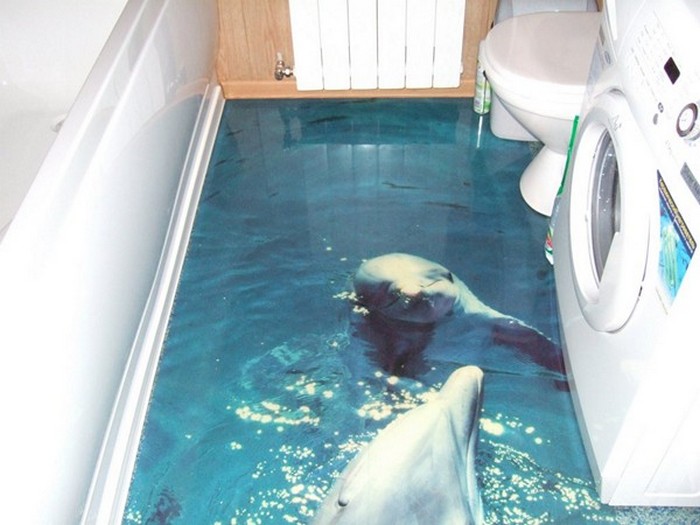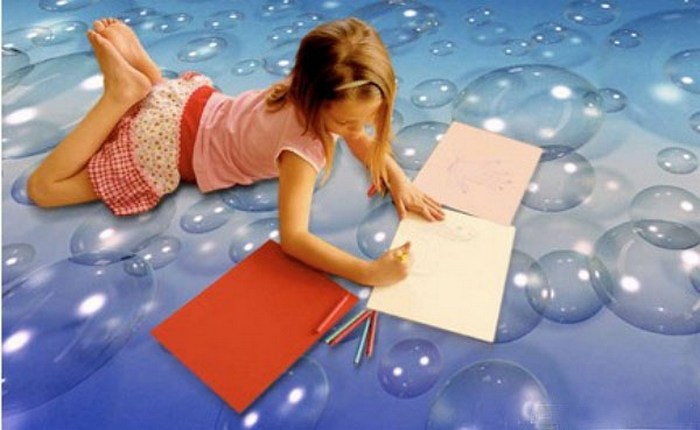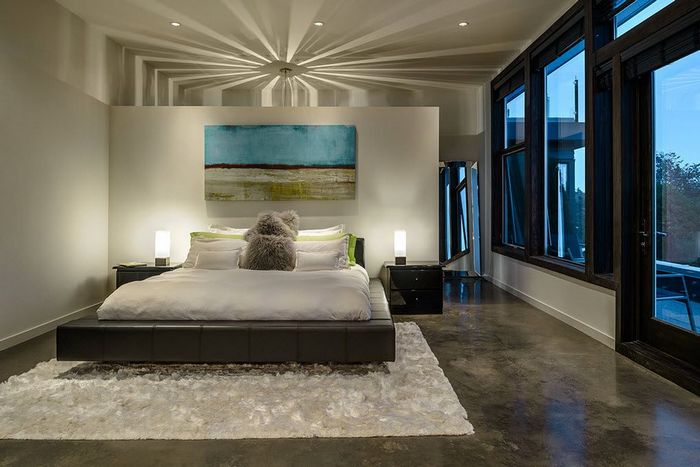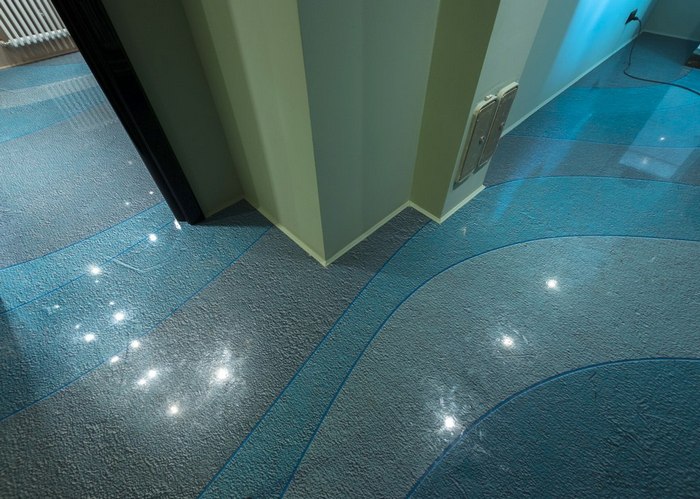Without that, a huge selection of floor coverings is replenished every year with new materials and technologies. Several years ago, self-leveling floors, a kind of mirror reflection of stretch ceilings, began to enter into practice. Such a finish breaks stereotypes about how the floor in a private house should look, causing many consumers to delight even when looking at a photo of such coatings. Indeed, there is something to see. However, the floor covering should not only be pleasing to the eye, but also be practical and appropriate in terms of functional load for a particular room in a private house or a wooden cottage. How the situation with self-leveling floors is in this regard, you will find out by reading the article.
Self-leveling floor, what is it
This technology provides for the creation of a durable glossy floor surface by pouring and leveling two-component polymer compositions. Finishing layers differ according to the following criteria:
- the type of material used(epoxy resin, varieties of materials based on polyurethane and methyl acrylate);
- the thickness of the fill (for domestic private premises, the layer ranges from 2 to 8 mm).
The top coating of the self-leveling floor in most cases is transparent and colorless, although there are options with its tinting. The base layer bears the decorative load. It is done in several ways, on which the richness and volume of the resulting picture depends. The following methods of creating a visual image are used:
- laying out flattened objects on a prepared base (coins, buttons, specially made chips that imitate the image of corals, shells, etc.);
- drawing on the base surface of drawings by means of manufactured stencils or at random;
- gluing vinyl film on which an image is applied using a photo printing method (mainly with a 3D effect).
In addition, there is the simplest version of a self-leveling floor, when a painted finishing layer is poured onto a flat base without a decorative base. The result is a monochromatic glossy finish.
Features of the self-leveling floor

It is enough to look at the photos of such coatings to understand that they are unusual, original and, according to these characteristics, are far ahead of any of their competitors. Undoubtedly, with the help of the described technologies, it is possible to create an absolutely unique picture, which will be the fruit of the imagination of a designer or owner of a private cottage. And there are practically no restrictions, especially if you use vinyl film as a decoration, onto which an image is transferred from any photo of the appropriate quality. That is, in terms of decorative properties, self-leveling floors have no equal so far.
What about the rest of the characteristics of polymer flooring? Most of their manufacturers declare such quality indicators (they relate to the topcoat that bears the operational load):
- the surface is monolithic, smooth, not prone to shrinkage and cracking;
- practically does not have linear deformations when the temperature changes;
- the coating is durable, but prone to scratching by hard objects, therefore, installing (moving) bulky furniture and walking in shoes dramatically shortens the operational period;
- withstands temperature drops within -30 +60, which makes it possible to install a warm floor;
- the polymeric materials used are resistant to fungal and bacterial damage;
- polymers are inert, therefore, immune to aggressive chemicals and problem-free in terms of wet cleaning.
The listed qualities of self-leveling floors show that, in general, they are practical, although they have some operational limitations, so it is worth figuring out whether a similar floor covering will be appropriate in every room of a private house or cottage.
Is it worth making a self-leveling floor in a nursery

This room in a private cottage has a special status, as the future of the family spends time here. When designing an interior for a nursery, caring parents think not only about the delights of design, but also about the health of the younger generation. Whatever one may say, but the coating of self-leveling floors is polymer and there is no guarantee that it does not emit any volatile compounds, even in small quantities. So, given this factor, the device of polymer topcoats on the floor of the children's room is not desirable.
In addition, a child, actively playing on a glossy surface, will be guaranteed to damage it, which will prematurely lead to the need for repair or replacement of the floor covering. Another “cons” factor is a slippery surface, leading to bruises and other injuries. Covering an expensive self-leveling floor with something soft and non-slip, thereby covering the created image, is not logical. It is better to abandon the idea of creating such a coating where a child lives in a private house, initially.
Flooded floor in the bedroom

In this room, an interior is supposed to symbolize peace and tranquility, so there should not be too catchy and attention-grabbing objects and details. A bright self-leveling floor, especially with a three-dimensional image, is unlikely to add comfort here. The properties of polymers to release something (this may not be studied or discussed) will also not improve the quality of a night's rest.
Polymer floor in the bathroom of a private house (cottage)

This is exactly the room where the self-leveling floor will be most appropriate. Usually no one walks here in shoes, so the coating is unlikely to be covered with scratches. Polymers are not afraid of moisture, mold will not start on them, they are easy to clean. It is all the more easy to create a three-dimensional image on the water (marine) theme, perfectly suited to the bathroom.
Another “pros” is a much warmer surface (in terms of tactile sensations) when compared to traditional bathroom tiles. If desired, nothing will prevent you from "heating" the self-leveling floor with a water or electric trench system. As for possible harmful emissions, their likely negative impact here will be minimal, since each of the household members spends a minimum of time in the bathroom, moreover, these rooms are always equipped with an effective ventilation system.
Is it worth pouring 3D flooring in other rooms of the house or wooden cottage

When choosing a place where it would be correct to make a volumetric image in the floor, you need to be guided by such considerations.



